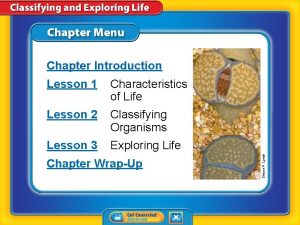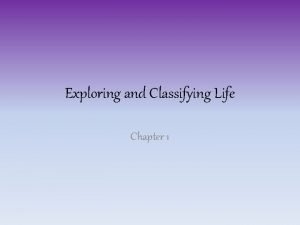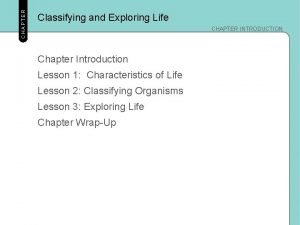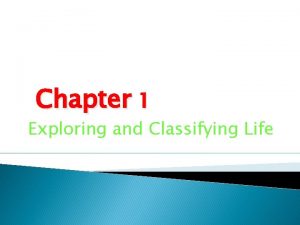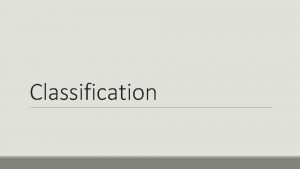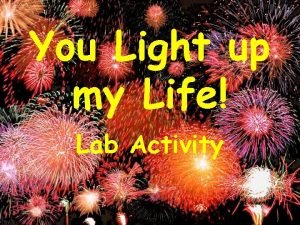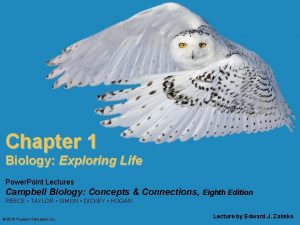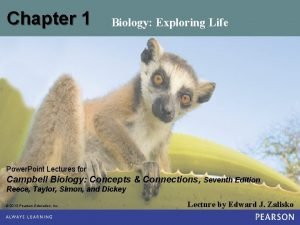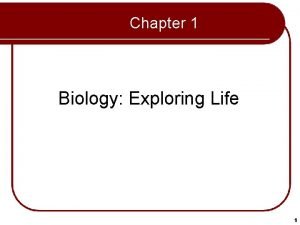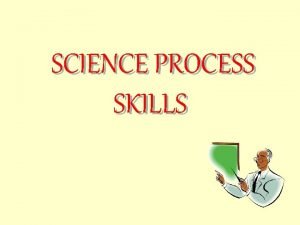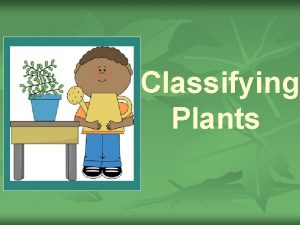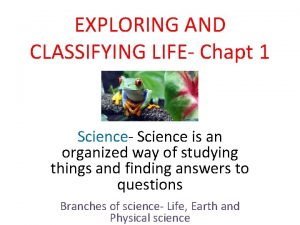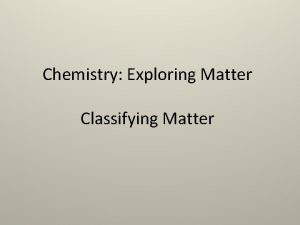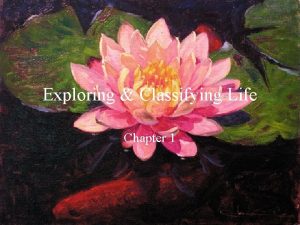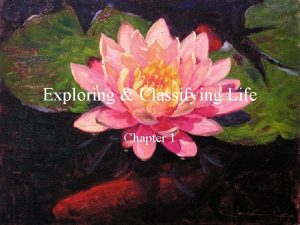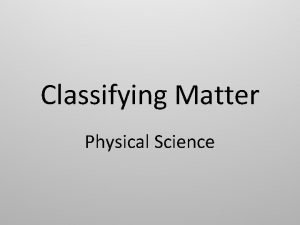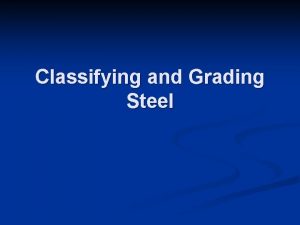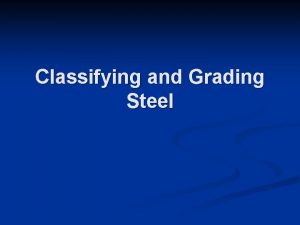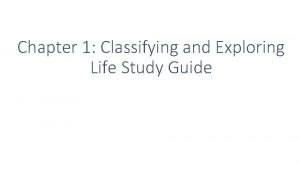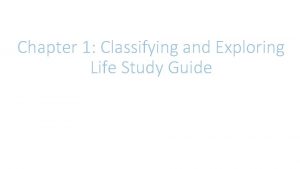EXPLORING AND CLASSIFYING LIFE WHAT IS SCIENCE Science













- Slides: 13

EXPLORING AND CLASSIFYING LIFE

WHAT IS SCIENCE • Science is an organized way of studying things and finding answers to questions. • Scientific methods are procedures used to solve problems and answer questions. • Hypothesis- an explanation that can be tested. • Control- the standard to which the outcome of a test is compared. • Variable- something in an experiment that can change.

WHAT IS SCIENCE • Steps of the Scientific Method • Make an observation • Ask a question • Research • Form a hypothesis • Complete experiment • Observations • Results/ Conclusion

WHAT IS SCIENCE • A theory is an explanation based on many scientific observations. • Scientists use the SI system for measurements. • A scientific law is a statement about how things work in nature that seems to be true all the time. • Example- Law of heredity- explains how genes are inherited

LIVING THINGS • Organism- any living thing. • A cell is the smallest unit of an organism that carries on the functions of life. • Homeostasis- the ability to keep the proper internal conditions of an organism’s life. • Organisms use energy to stay organized and perform activities like homeostasis.

LIVING THINGS • All of the changes that take place during an organism’s life are call development • All living things need a place to live, water, and food.

LIVING THINGS • ORDER +A • O- Organized by cells • R-Reproduce • D-Develop and Grow • E- Energy • R- Respond to change. • Anything that causes some change in an organism is a stimulus. A- Adapt

WHERE DOES LIFE COME FROM? • Spontaneous generation- the idea that living things come from nonliving things. • The work of Louis Pasteur in 1859 disproved theory of spontaneous generation. • Louis Pasteur replaced theory of spontaneous generation with biogenesis. • Biogenesis is theory that living things come only from other living things.

WHERE DOES LIFE COME FROM? • Turn to page 21

HOW ARE LIVING THINGS CLASSIFIED? • Phylogeny- the evolutionary history of an organism, how it has changed over time. • The classification system used today groups organisms into 6 kingdoms. • Kingdom is the first and largest category. • Turn to page 23

HOW ARE LIVING THINGS CLASSIFIED? • Binomial nomenclature is the two-word naming system that gives organisms their scientific names. • The first word of the two-word name identifies the genus of the organism. • Genus-a group of similar species. • The second word of the name identifies the species. • Example- Felis Domesticus (house cat)

HOW ARE LIVING THINGS CLASSIFIED? • Four reasons scientific names are used: 1. Avoid mistakes 2. Organisms with similar evolutionary histories are classified together. • Organisms in the same genus are related. 3. Gives descriptive information about the species. 4. Allow information about organisms to be organized easily.

HOW ARE LIVING THINGS CLASSIFIED? • Dichotomous key- a detailed list of identifying characteristics that includes scientific names • Dichotomous keys are arranged in steps with two descriptive statements. • Turn to page 26
 Classifying and exploring life lesson 1 answer key
Classifying and exploring life lesson 1 answer key Classifying and exploring life lesson 2 answers
Classifying and exploring life lesson 2 answers Classifying and exploring life
Classifying and exploring life Exploring and classifying life
Exploring and classifying life Family genus species
Family genus species Canis latrans classification
Canis latrans classification You light up my life chemistry lab answer key
You light up my life chemistry lab answer key Connecting the concepts: exploring life
Connecting the concepts: exploring life Connecting the concepts exploring life
Connecting the concepts exploring life Biology exploring life chapter 1
Biology exploring life chapter 1 Processing skills in science
Processing skills in science Classifying science process skills
Classifying science process skills Exploring physical science
Exploring physical science What's your favourite subject at school
What's your favourite subject at school
